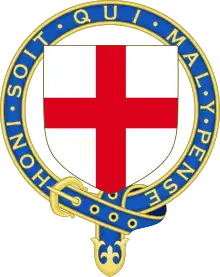Willem-Alexander of the Netherlands
Willem-Alexander (Dutch: [ˈʋɪləm aːlɛkˈsɑndər]; Willem-Alexander Claus George Ferdinand; born 27 April 1967) is King of the Netherlands, having acceded to the throne following his mother's abdication in 2013.
| Willem-Alexander | |||||
|---|---|---|---|---|---|
 | |||||
| King of the Netherlands | |||||
| Reign | 30 April 2013 – present | ||||
| Inauguration | 30 April 2013 | ||||
| Predecessor | Beatrix | ||||
| Heir apparent | Catharina-Amalia | ||||
| Prime minister | Mark Rutte | ||||
| Born | 27 April 1967 University Medical Center Utrecht, Utrecht, Netherlands | ||||
| Spouse | |||||
| Issue | |||||
| |||||
| House | Orange-Nassau (official) Amsberg (agnatic) | ||||
| Father | Claus von Amsberg | ||||
| Mother | Beatrix of the Netherlands | ||||
| Religion | Protestant Church in the Netherlands | ||||
| Signature |  | ||||
| Military career | |||||
| Allegiance | |||||
| Service/ | |||||
| Years of service | 1985–2013 | ||||
| Rank |
| ||||
 |
|
| * Member of the Dutch royal house |
Willem-Alexander was born in Utrecht as the oldest child of Princess Beatrix and diplomat Claus van Amsberg. He became Prince of Orange as heir apparent upon his mother's accession as Queen on 30 April 1980, and succeeded her following her abdication on 30 April 2013. He went to public primary and secondary schools, served in the Royal Netherlands Navy, and studied history at Leiden University. He married Máxima Zorreguieta Cerruti in 2002 and they have three daughters: Catharina-Amalia, Princess of Orange (born 2003), Princess Alexia (born 2005), and Princess Ariane (born 2007).
Willem-Alexander is interested in sports and international water management issues. Until his accession to the throne, he was a member of the International Olympic Committee (1998–2013),[1] chairman of the Advisory Committee on Water to the Dutch Minister of Infrastructure and the Environment (2004–2013),[2] and chairman of the Secretary-General of the United Nations' Advisory Board on Water and Sanitation (2006–2013).[3][4]
Early life and education

Willem-Alexander Claus George Ferdinand was born on 27 April 1967 at the Utrecht University Hospital (now known as the University Medical Center Utrecht) in Utrecht, Netherlands. He is the first child of Princess Beatrix and Prince Claus,[5] and the first grandchild of Queen Juliana and Prince Bernhard. He was the first male Dutch royal baby since the birth of Prince Alexander in 1851, and the first immediate male heir since Alexander's death in 1884.
From birth, Willem-Alexander has held the titles Prince of the Netherlands (Dutch: Prins der Nederlanden), Prince of Orange-Nassau (Dutch: Prins van Oranje-Nassau), and Jonkheer of Amsberg (Dutch: Jonkheer van Amsberg).[5] He was baptised as a member of the Dutch Reformed Church[6] on 2 September 1967[7] in Saint Jacob's Church in The Hague.[8] His godparents are Prince Bernhard of Lippe-Biesterfeld, Gösta Freiin von dem Bussche-Haddenhausen, Prince Ferdinand von Bismarck, former Prime Minister Jelle Zijlstra, Jonkvrouw Renée Röell, and Queen Margrethe II of Denmark.[7]
He had two younger brothers: Prince Friso (1968–2013) and Prince Constantijn (born in 1969). He lived with his family at the castle Drakensteyn in the hamlet Lage Vuursche near Baarn from his birth until 1981, when they moved to the larger palace Huis ten Bosch in The Hague. His mother, Beatrix, became Queen of the Netherlands in 1980, after his grandmother Juliana abdicated. He then received the title of Prince of Orange as heir apparent to the throne of the Kingdom of the Netherlands.[5]
Willem-Alexander attended local state primary school Nieuwe Baarnse Elementary School in Baarn from 1973 to 1979. He went to two different state secondary schools: the Baarns Lyceum in Baarn from 1979 to 1981 and the Eerste Vrijzinnig Christelijk Lyceum in The Hague from 1981 to 1983, and the private sixth-form college United World College of the Atlantic in Wales, the UK (1983 to 1985), from which he received his International Baccalaureate.[5][9]
After his military service from 1985 to 1987, Willem-Alexander studied History at Leiden University from 1987 onwards and received his MA degree (doctorandus) in 1993.[10][11] His final thesis was on the Dutch response to France's decision under President Charles de Gaulle to leave the NATO's integrated command structure.[5]
Willem-Alexander speaks English, Spanish, French and German (his father's language) fluently in addition to his native Dutch.[12]
Military training and career

Between secondary school and his university education, Willem-Alexander performed military service in the Royal Netherlands Navy from August 1985 until January 1987. He received his training at the Royal Netherlands Naval College and the frigates HNLMS Tromp and HNLMS Abraham Crijnssen, where he was an ensign. In 1988 he received additional training at the ship HNLMS Van Kinsbergen and became a lieutenant (junior grade) (wachtofficier).[13]
As a reservist for the Royal Netherlands Navy, Willem-Alexander was promoted to Lieutenant Commander in 1995, Commander in 1997, Captain at Sea in 2001, and Commodore in 2005. As a reservist for the Royal Netherlands Army, he was made a Major (Grenadiers' and Rifles Guard Regiment) in 1995, and was promoted to Lieutenant Colonel in 1997, Colonel in 2001, and Brigadier General in 2005. As a reservist for the Royal Netherlands Air Force, he was made Squadron Leader in 1995 and promoted to Air Commodore in 2005. As a reservist for the Royal Marechaussee, he was made Brigadier General in 2005.[9]
Before his investiture as king in 2013, Willem-Alexander was honorably discharged from the armed forces. The government declared that the head of state cannot be a serving member of the armed forces, since the government itself holds supreme command over the armed forces. As king, Willem-Alexander may choose to wear a military uniform with royal insignia, but not with his former rank insignia.[14]
Activities and social interests

Since 1985, when he became 18 years old, Willem-Alexander has been a member of the Council of State of the Netherlands. This is the highest council of the Dutch government and is chaired by the head of state (then Queen Beatrix).[15]
Willem-Alexander is interested in water management and sports issues. He was an honorary member of the World Commission on Water for the 21st century and patron of the Global Water Partnership, a body established by the World Bank, the UN, and the Swedish Ministry of Development. He was appointed as the Chairperson of the United Nations Secretary General's Advisory Board on Water and Sanitation on 12 December 2006.[16]
On 10 October 2010, Willem-Alexander and Máxima went to the Netherlands Antilles' capital, Willemstad, to attend and represent his mother, the Queen, at the Antillean Dissolution ceremony.
He was a patron of the Dutch Olympic Games Committee until 1998 when he was made a member of the International Olympic Committee (IOC). After becoming King, he relinquished his membership and received the Gold Olympic Order at the 125th IOC Session.[17] To celebrate the 100th anniversary of the 1928 Summer Olympics held in Amsterdam, he had expressed support to bid for the 2028 Summer Olympics.[18]
He was a member of the supervisory board of De Nederlandsche Bank (the Dutch central bank), a member of the Advisory Council of ECP (the information society forum for government, business and civil society), patron of Veterans' Day and held several other patronages and posts.[19]
Reign
On 28 January 2013, Beatrix announced her intention of abdicating. On the morning of 30 April, Beatrix signed the instrument of abdication at the Moseszaal (Moses Hall) at the Royal Palace of Amsterdam. Later that afternoon, Willem-Alexander was inaugurated as king in front of the joint assembly of the States General in a ceremony held at the Nieuwe Kerk.
As king, Willem-Alexander has weekly meetings with the prime minister and speaks regularly with ministers and state secretaries. He also signs all new Acts of Parliament and royal decrees. He represents the kingdom at home and abroad. At the State Opening of Parliament, he delivers the Speech from the Throne, which announces the plans of the government for the parliamentary year. The Constitution requires that the king appoint, dismiss and swear in all government ministers and state secretaries. As king, he is also the chairman of the Council of State, an advisory body that reviews proposed legislation. In modern practice, the monarch seldom chairs council meetings.[20]
At his accession at age 46, he was Europe's youngest monarch. On the inauguration of Spain's Felipe VI on 19 June 2014 he became, and remains, Europe's second-youngest monarch. He is also the first male monarch of the Netherlands since the death of his great-great-grandfather William III in 1890. Willem-Alexander was one of four new monarchs to take the throne in 2013 along with Pope Francis, the Emir Tamim bin Hamad of Qatar, and King Philippe of Belgium.
Other activities

Willem-Alexander is an avid pilot and has said that if he had not been a royal, he would have liked to be an airline pilot so he could fly internationally on large-sized aircraft such as the Boeing 747.[21] During the reign of his mother, he regularly flew the Dutch royal aircraft on trips.[22] However, in May 2017, Willem-Alexander revealed that he had served as a first officer on KLM flights for 21 years, flying KLM Cityhopper's Fokker 70s twice a month, even after his accession to the throne. Following KLM's phased retirement of the Fokker 70, he began training to fly Boeing 737s. Willem-Alexander was rarely recognized while in the KLM uniform and wearing the KLM cap, though a few passengers recognized his voice, even though he never gave his name and only welcomed passengers on behalf of the captain and crew.[21][23]
Using the name "W. A. van Buren", one of the least-known titles of the House of Orange-Nassau, he participated in the 1986 Frisian Elfstedentocht, a 200-kilometre-long (120 mi) distance ice skating tour.[24] He ran the New York City Marathon under the same pseudonym in 1992.[25] Willem-Alexander completed both events.
Marriage and children

On 2 February 2002, he married Máxima Zorreguieta Cerruti at the Nieuwe Kerk in Amsterdam. The marriage triggered significant controversy due to the role the bride's father, Jorge Zorreguieta, had in the Argentinian military dictatorship. The couple have three daughters: The Princess of Orange, Princess Alexia, and Princess Ariane.

Privacy and the press
In an attempt to strike a balance between privacy for the royal family and availability to the press, the Netherlands Government Information Service (RVD) instituted a media code on 21 June 2005 which essentially states that:[26]
- Photographs of the members of the royal house while performing their duties are always permitted.
- For other occasions (like holidays or vacations), the RVD will arrange a photo-op on condition that the press leave the family alone for the rest of the activity.
During a ski vacation in Argentina, several photographs were taken of the prince and his family during the private part of their holiday, including one by Associated Press staff photographer Natacha Pisarenko, in spite of the media code, and after a photo opportunity had been provided earlier.[27] The Associated Press decided to publish some of the photos, which were subsequently republished by several Dutch media. Willem-Alexander and the RVD jointly filed suit against the Associated Press on 5 August 2009, and the trial started on 14 August at the district court in Amsterdam. On 28 August, the district court ruled in favour of the prince and RVD, citing that the couple has a right to privacy, that the pictures in question add nothing to any public debate, and that they are not of any particular value to society since they are not photographs of his family "at work". Associated Press was sentenced to stop further publication of the photographs, on pain of a €1,000 fine per violation with a €50,000 maximum.[28]
Properties
Willem-Alexander and his family initially lived in Villa Eikenhorst on the De Horsten estate in Wassenaar. After his mother abdicated and became Princess Beatrix once again, she moved to the castle of Drakensteyn, after which the King and his family moved to the newly renovated monarch's palace of Huis ten Bosch in The Hague in 2019.[29]
Willem-Alexander has a villa near Kranidi, Greece. Former actor Sean Connery had his own house nearby.[30]
Villa in Manchagulo
On 10 July 2008, the Prince of Orange and Princess Maxima announced that they had invested in a development project on the Mozambican peninsula of Machangulo.[31] The development project was aimed at building an ecologically responsible vacation resort, including a hotel and several luxury holiday homes for investors. The project was to invest heavily in the local economy of the peninsula (building schools and a local clinic) with an eye both towards responsible sustainability and maintaining a local staff.[32] After contacting Mozambican President Armando Guebuza to verify that the Mozambican government had no objections, the couple decided to invest in two villas.[33] In 2009, controversy erupted in parliament and the press about the project and the prince's involvement.[33] Politician Alexander Pechtold questioned the morality of building such a resort in a poor country like Mozambique. After public and parliamentary controversy the royal couple announced that they decided to sell the property in Machangulo once their house was completed.[34] In January 2012, it was confirmed that the villa had been sold.[35]
Titles, styles, honours and arms
Titles and styles
- 27 April 1967 – 30 April 1980: His Royal Highness Prince Willem-Alexander of the Netherlands, Prince of Orange-Nassau, Jonkheer van Amsberg
- 30 April 1980 – 30 April 2013: His Royal Highness The Prince of Orange
- 30 April 2013 – present: His Majesty The King of the Netherlands
Willem-Alexander is the first Dutch king since Willem III, who died in 1890. Willem-Alexander had earlier indicated that when he became king, he would take the name Willem IV,[36] but it was announced in January 2013 that his regnal name would be Willem-Alexander.[37]
Military ranks


- Royal Netherlands Navy – Conscription
 Lieutenant at sea, third class (Ensign) (August 1985 – January 1987)
Lieutenant at sea, third class (Ensign) (August 1985 – January 1987) Lieutenant at sea, second class (Sub-lieutenant) (watch officer, 1988)
Lieutenant at sea, second class (Sub-lieutenant) (watch officer, 1988)
- Royal Netherlands Navy – Reserve
 Lieutenant at sea, second class (senior grade) (Lieutenant) (1988–1995)
Lieutenant at sea, second class (senior grade) (Lieutenant) (1988–1995) Lieutenant at sea, first class (Lieutenant Commander) (1995–1997)
Lieutenant at sea, first class (Lieutenant Commander) (1995–1997) Captain-lieutenant at sea (Commander) (1997–2001)
Captain-lieutenant at sea (Commander) (1997–2001) Captain at Sea (2001–2005)
Captain at Sea (2001–2005) Commodore (2005–2013)
Commodore (2005–2013)
- Royal Netherlands Air Force – Reserve
 Squadron Leader (1995–2005)
Squadron Leader (1995–2005) Air Commodore (2005–2013)
Air Commodore (2005–2013)
- Royal Netherlands Army – Reserve
 Major, Grenadiers' and Rifles Guard Regiment (1995–1997)
Major, Grenadiers' and Rifles Guard Regiment (1995–1997) Lieutenant Colonel (1997–2001)
Lieutenant Colonel (1997–2001) Colonel (2001–2005)
Colonel (2001–2005) Brigadier General (2005–2013)
Brigadier General (2005–2013)
- Royal Marechaussee – Reserve
 Brigadier General (2005–2013)
Brigadier General (2005–2013)
- King's Insignia, all services
 Royal insignia as King (2013–present)
Royal insignia as King (2013–present)
Qualifications
Honours
National
 Grand Master of the Military William Order
Grand Master of the Military William Order Grand Master and Knight Grand Cross of the Order of the Netherlands Lion
Grand Master and Knight Grand Cross of the Order of the Netherlands Lion Grand Master of the Order of Orange-Nassau
Grand Master of the Order of Orange-Nassau Co-Grand Master and Knight of the Order of the Gold Lion of the House of Nassau
Co-Grand Master and Knight of the Order of the Gold Lion of the House of Nassau Grand Master and Grand Cross of the Order of the House of Orange
Grand Master and Grand Cross of the Order of the House of Orange Grand Master of the Order of the Crown
Grand Master of the Order of the Crown Grand Master of the Order for Loyalty and Merit
Grand Master of the Order for Loyalty and Merit_ribbon_-vector.svg.png.webp) Honorary Commander of the Order of Saint John in the Netherlands[38]
Honorary Commander of the Order of Saint John in the Netherlands[38] Grand Master of the Order of the Golden Ark
Grand Master of the Order of the Golden Ark Recipient of the Eleven Cities Cross
Recipient of the Eleven Cities Cross Recipient of the Officer Long Service Cross
Recipient of the Officer Long Service Cross Recipient of the Queen Beatrix Inauguration Medal
Recipient of the Queen Beatrix Inauguration Medal Recipient of the Wedding Medal of Prince Willem-Alexander to Maxima Zorruigeta
Recipient of the Wedding Medal of Prince Willem-Alexander to Maxima Zorruigeta
Foreign
 Argentina: Collar of the Order of the Liberator General San Martín[39]
Argentina: Collar of the Order of the Liberator General San Martín[39].svg.png.webp) Belgium:
Belgium:
- Grand Cordon of the Order of Leopold (2016)
- Grand Cross of the Order of the Crown (1993)
 Brazil: Grand Cross of the Order of the Southern Cross
Brazil: Grand Cross of the Order of the Southern Cross Brunei: Member 1st Class of the Family Order of Laila Utama
Brunei: Member 1st Class of the Family Order of Laila Utama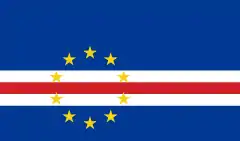 Cape Verde: Member 1st Class of the Amílcar Cabral Order[40]
Cape Verde: Member 1st Class of the Amílcar Cabral Order[40] Chile: Grand Cross of the Order of the Merit
Chile: Grand Cross of the Order of the Merit Denmark: Knight of the Order of the Elephant[41] (31 January 1998)
Denmark: Knight of the Order of the Elephant[41] (31 January 1998) Estonia: Collar with Star of the Order of the Cross of Terra Mariana[42]
Estonia: Collar with Star of the Order of the Cross of Terra Mariana[42] France:
France:
- Grand Cross of the Order of the Legion of Honour[43] (20 January 2014)
- Grand Cross of the National Order of Merit
 Germany: Grand Cross First class of the Order of Merit of the Federal Republic of Germany[44][45][46]
Germany: Grand Cross First class of the Order of Merit of the Federal Republic of Germany[44][45][46] Indonesia: Member 1st Class of the Star of Mahaputera
Indonesia: Member 1st Class of the Star of Mahaputera Italy: Knight Grand Cross with Collar of the Order of Merit of the Italian Republic[47]
Italy: Knight Grand Cross with Collar of the Order of Merit of the Italian Republic[47] Japan: Grand Cordon with Collar of the Order of the Chrysanthemum[48] (2014)
Japan: Grand Cordon with Collar of the Order of the Chrysanthemum[48] (2014) Latvia: Commander Grand Cross with Chain 1st Class of the Order of the Three Stars[49] (6 June 2018)
Latvia: Commander Grand Cross with Chain 1st Class of the Order of the Three Stars[49] (6 June 2018) Lithuania: Grand Cross with Golden Chain of the Order of Vytautas the Great[50] (13 June 2018)
Lithuania: Grand Cross with Golden Chain of the Order of Vytautas the Great[50] (13 June 2018) Luxembourg:
Luxembourg:
- Grand Cross of the Order of Adolphe of Nassau
- Grand Cross of the Order of the Oak Crown
 Mexico: Sash of the Order of the Aztec Eagle (2009)
Mexico: Sash of the Order of the Aztec Eagle (2009) Norway: Grand Cross of the Order of St. Olav (1996)
Norway: Grand Cross of the Order of St. Olav (1996)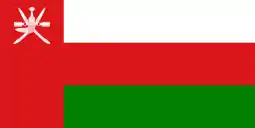 Oman: Member Special Class of the Order of Oman
Oman: Member Special Class of the Order of Oman Poland: Knight of the Order of the White Eagle
Poland: Knight of the Order of the White Eagle Portugal: Grand Collar of the Order of Prince Henry[51] (10 October 2017)
Portugal: Grand Collar of the Order of Prince Henry[51] (10 October 2017) Spain: Knight Grand Cross of the Order of Isabella the Catholic[52]
Spain: Knight Grand Cross of the Order of Isabella the Catholic[52] Sweden: Knight of the Royal Order of the Seraphim (24 November 1993)
Sweden: Knight of the Royal Order of the Seraphim (24 November 1993) Thailand: Knight Grand Cordon of the Order of Chula Chom Klao[53]
Thailand: Knight Grand Cordon of the Order of Chula Chom Klao[53]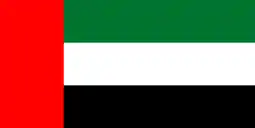 United Arab Emirates: Grand Cross of the Order of Union
United Arab Emirates: Grand Cross of the Order of Union United Kingdom: Stranger Knight of the Order of the Garter[54] (2018)
United Kingdom: Stranger Knight of the Order of the Garter[54] (2018)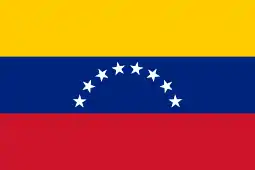 Venezuela: Grand Cross of the Order of the Liberator
Venezuela: Grand Cross of the Order of the Liberator
Awards
- International Olympic Committee: Recipient of the Gold Olympic Order[17] (2013)
Honorary appointment
- Aide-de-camp to Her Majesty The Queen (until 2013)
Arms
 |
|
Ancestry
Through his father, a member of the House of Amsberg, he is descended from families of the lower German nobility, and through his mother, from several royal German–Dutch families such as the House of Lippe, Mecklenburg-Schwerin, the House of Orange-Nassau, Waldeck and Pyrmont, and the House of Hohenzollern. He is descended from the first king of the Netherlands, William I of the Netherlands, who was also a ruler in Luxembourg and several German states, and all subsequent Dutch monarchs.
By his mother, Willem-Alexander also descended from Paul I of Russia and thus from German princess Catherine the Great and Swedish King Gustav I. Through his father, he is also descended from several Dutch–Flemish families who left the Low Countries during Spanish rule, such as the Berenbergs. His paternal great-great-grandfather Gabriel von Amsberg, a major-general of Mecklenburg, was recognized as noble as late as 1891, the family having adopted the "von" in 1795.[56][57]
Willem-Alexander is a descendant of King George II and, more relevant for his succession rights, of his granddaughter Princess Augusta of Great Britain. Under the British Act of Settlement, King Willem-Alexander temporarily forfeited his (distant) succession rights to the throne of the United Kingdom by marrying a Roman Catholic. This right has since been restored in 2015 under the Succession to the Crown Act 2013.[58]
| Ancestors of Willem-Alexander of the Netherlands | |||||||||||||||||||||||||||||||||||||||||||||||||||||||||||||||||||||||||||||||||||||||||||||||||||||||||||||||||||||||||||||||||||||||||||||||||||||||||||||||||||||||||||||||||||||||||||||||||||||||||||||||||||||||||||||||||||||||||||||||||||||||||||||||||||||||||||||||||||||||||
|---|---|---|---|---|---|---|---|---|---|---|---|---|---|---|---|---|---|---|---|---|---|---|---|---|---|---|---|---|---|---|---|---|---|---|---|---|---|---|---|---|---|---|---|---|---|---|---|---|---|---|---|---|---|---|---|---|---|---|---|---|---|---|---|---|---|---|---|---|---|---|---|---|---|---|---|---|---|---|---|---|---|---|---|---|---|---|---|---|---|---|---|---|---|---|---|---|---|---|---|---|---|---|---|---|---|---|---|---|---|---|---|---|---|---|---|---|---|---|---|---|---|---|---|---|---|---|---|---|---|---|---|---|---|---|---|---|---|---|---|---|---|---|---|---|---|---|---|---|---|---|---|---|---|---|---|---|---|---|---|---|---|---|---|---|---|---|---|---|---|---|---|---|---|---|---|---|---|---|---|---|---|---|---|---|---|---|---|---|---|---|---|---|---|---|---|---|---|---|---|---|---|---|---|---|---|---|---|---|---|---|---|---|---|---|---|---|---|---|---|---|---|---|---|---|---|---|---|---|---|---|---|---|---|---|---|---|---|---|---|---|---|---|---|---|---|---|---|---|---|---|---|---|---|---|---|---|---|---|---|---|---|---|---|---|---|---|---|---|---|---|---|---|---|---|---|---|---|---|---|---|---|
| |||||||||||||||||||||||||||||||||||||||||||||||||||||||||||||||||||||||||||||||||||||||||||||||||||||||||||||||||||||||||||||||||||||||||||||||||||||||||||||||||||||||||||||||||||||||||||||||||||||||||||||||||||||||||||||||||||||||||||||||||||||||||||||||||||||||||||||||||||||||||
References
- "Dutch Crown Prince quits IOC in preparation to become king", Sports Illustrated, 2013, archived from the original on 13 December 2013, retrieved 19 April 2013
- "Prins Willem-Alexander neemt afscheid van Adviescommissie Water", de Volkskrant (in Dutch), 2013, archived from the original on 6 May 2013, retrieved 19 April 2013
- Who We Are Archived 19 May 2013 at the Wayback Machine, United Nations Secretary-General's Advisory Board on Water and Sanitation. Retrieved 19 April 2013.
- (in Dutch)Willem-Alexander neemt afscheid als 'waterprins' Archived 17 May 2013 at the Wayback Machine, Trouw, 2013. Retrieved 19 April 2013.
- The Prince of Orange Archived 9 May 2009 at the Wayback Machine. Dutch Royal House. Retrieved 19 July 2009.
- Doop Willem-Alexander Archived 31 March 2009 at the Wayback Machine. Nederlandse Omroep Stichting. Retrieved 13 December 2009.
- 40 meest gestelde vragen. Dutch Royal House. Retrieved 13 December 2009.
- Doopplechtigheid Prins Willem-Alexander in Sint Jacobskerk Archived 27 July 2011 at the Wayback Machine. Radio Netherlands Worldwide. Retrieved 13 December 2009.
- Z.M. koning Willem-Alexander , koning der Nederlanden, prins van Oranje-Nassau Archived 2 May 2013 at the Wayback Machine, Parlement. Retrieved 5 April 2013.
- Ruud Hoff. "ANP Historisch Archief Community - Leiden, 2 juli 1993". Anp-archief.nl. Archived from the original on 15 August 2017. Retrieved 15 June 2017.
- "Leiden's links with the Dutch Royal Family ~ Masters in Leiden". en.mastersinleiden.nl. Archived from the original on 12 December 2013. Retrieved 15 June 2017.
- "Prins Willem-Alexander blundert tijdens staatsbezoek Mexico". 925. 5 November 2009. Archived from the original on 10 December 2013. Retrieved 3 May 2013.
- Military career Archived 24 November 2009 at the Wayback Machine. Dutch Royal House. Retrieved 17 December 2009.
- King will retain close relationship with armed forces Archived 17 February 2015 at the Wayback Machine (press release), Ministry of Defence, 2013. Retrieved 3 March 2013
- The Dutch Council of State Archived 2 August 2013 at the Wayback Machine, De Raad van State. Retrieved 24 July 2013.
- "About UNSGAB". UNSGAB. Archived from the original on 30 July 2012. Retrieved 28 January 2013.
- "New Dutch King awarded Olympic gold order, receiving IOC's highest honor after stepping down". The Washington Post. 8 September 2013. Retrieved 10 September 2013.
- Netherlands May Bid For 2028 Games Archived 18 August 2008 at the Wayback Machine, Gamesbids.com
- His Majesty King Willem-Alexander, Koninklijk Huis. Retrieved 24 July 2013.
- Position and role as head of state Archived 3 June 2014 at the Wayback Machine, Koninklijk Huis. Retrieved on 24 July 2013.
- "Dutch King Willem-Alexander reveals secret flights as first officer". BBC News. 17 May 2017. Archived from the original on 17 May 2017. Retrieved 17 May 2017.
- "FAQ – Dutch royalty". Radio Netherlands Worldwide. 2011. Archived from the original on 27 January 2013. Retrieved 28 January 2013.
- Sephton, Connor (17 May 2017). "Dutch king reveals double life as an airline pilot for KLM". Sky News. Archived from the original on 18 May 2017. Retrieved 17 May 2017.
- Han (4 October 2012). "FAQ: eleven facts about the Eleven Cities Race | Radio Netherlands Worldwide". Radio Netherlands Worldwide. Archived from the original on 17 March 2013. Retrieved 28 January 2013.
- Brooks, James (19 April 2013). "Dutch abdication: Ten things you never knew about the royal family of the Netherlands". The Daily Telegraph. London. Archived from the original on 2 May 2013. Retrieved 4 May 2013.
- "Media Code on protecting the privacy of members of the Royal House". Netherlands Government Information Service. 21 June 2005. Archived from the original on 24 November 2010. Retrieved 11 June 2010.
- "Royals sue Associated Press over holiday photos". NRC. 5 August 2005. Archived from the original on 9 September 2009. Retrieved 11 June 2010.
- "Willem-Alexander wint rechtszaak tegen AP" (in Dutch). 28 August 2009. Archived from the original on 8 March 2012.
- (Dutch) Prinses Beatrix, Koninklijk Huis. Retrieved 24 July 2013.
- "Dutch prince buys villa next to James Bond actor". BBC News. 16 April 2012. Archived from the original on 17 April 2012. Retrieved 24 July 2013.
- "Willem-Alexander wil huis voor kust Mozambique" (in Dutch). Trouw.nl. 10 July 2008. Archived from the original on 23 January 2015. Retrieved 23 January 2015.
- Bruno Waterfield (13 June 2010). "Dutch Crown Prince Willem-Alexander accused over Mozambique villa". The Daily Telegraph. London. Archived from the original on 1 June 2010. Retrieved 13 June 2010.
- "Prins had contact met president Mozambique". Algemeen Dagblad (in Dutch). 19 November 2009. Archived from the original on 23 January 2015. Retrieved 23 January 2015.
- "Crown prince bows to public pressure over Mozambique villa". NRC. 23 November 2009. Archived from the original on 2 March 2010. Retrieved 11 June 2010.
- "Prins verkoopt villa in Mozambique" (in Dutch). Nos.nl. 18 January 2012. Archived from the original on 23 January 2015. Retrieved 23 January 2015.
- "Interview met Willem-Alexander" (in Dutch). Archived from the original on 7 March 2007. Retrieved 6 May 2006.
- "Prince of Orange to become King Willem-Alexander". Archived from the original on 7 October 2015. Retrieved 15 June 2017.
- "Koning Willem-Alexander erecommandeur van Johanniter Orde". Reformatorisch Dagblad. 1 December 2014. Archived from the original on 31 May 2016. Retrieved 27 May 2016.
- "Máxima de Holanda, anfitriona de Juliana Awada en su visita de Estado a Holanda. Fotogalerías de Casas Reales". Archived from the original on 18 May 2017. Retrieved 15 June 2017.
- "Imprensa Nacional de Cabo Verde - quiosque digital". kiosk.incv.cv. Retrieved 11 November 2019.
- "Ordensdetaljer". Archived from the original on 7 December 2013. Retrieved 11 November 2019.
- Estonian Presidency, Estonian State Decorations (Estonian) - Willem-Alexander Hollandi kuningas
- "Koning krijgt grootkruis van Legioen van Eer". telegraaf.nl. Archived from the original on 23 January 2014.
- "Photographic image" (JPG). C7.alamy.com. Archived from the original on 3 April 2017. Retrieved 15 June 2017.
- "Photographic image". Static.socialitelife.com. Archived from the original (JPG) on 27 December 2016. Retrieved 15 June 2017.
- "Photographic image" (JPG). C7.alamy.com. Archived from the original on 3 April 2017. Retrieved 15 June 2017.
- "Le onorificenze della Repubblica Italiana". www.quirinale.it. Archived from the original on 7 September 2017.
- "外国人叙勲受章者名簿 平成26年 | 外務省". Mofa.go.jp. Archived from the original on 3 March 2016. Retrieved 15 June 2017.
- vestnesis.lv. "Par Triju Zvaigžņu ordeņa piešķiršanu - Latvijas Vēstnesis". www.vestnesis.lv (in Latvian). Retrieved 11 June 2018.
- "Royal visit crowns Lithuanian-Dutch friendship". www.lrp.lt.
- "ENTIDADES ESTRANGEIRAS AGRACIADAS COM ORDENS PORTUGUESAS - Página Oficial das Ordens Honoríficas Portuguesas". www.ordens.presidencia.pt. Archived from the original on 17 January 2013.
- "Boletín Oficial del Estado" (PDF). Archived (PDF) from the original on 4 March 2016. Retrieved 15 June 2017.
- http://www.ratchakitcha.soc.go.th/DATA/PDF/00137671.PDF
- Family, The Royal (23 October 2018). "The Queen has been pleased to appoint The King of The Netherlands a supernumerary Knight of the Garter. #NetherlandsStateVisitpic.twitter.com/cGZIAg2lDJ".
- "Dutch Royal House – Coat of Arms and standard". Archived from the original on 21 June 2008. Retrieved 29 June 2008.
- The Coat of Arms, Vol. 9, 66–72, p. 112, Heraldry Society.
- F. J. J. Tebbe, W. D. E. Aerts, Arnout van Cruyningen, Jean Klare (eds.), Encyclopedie van het Koninklijk Huis, p. 17, Winkler Prins, 2005.
- "Willem-Alexander maakt nu kans op de Britse troon". Nos.nl. Archived from the original on 4 March 2016. Retrieved 15 June 2017.
External links
| Wikimedia Commons has media related to Willem-Alexander. |
| Wikiquote has quotations related to: Willem-Alexander |
- Official page (English)
- (Dutch) on website of the Dutch Royal House
- Appearances on C-SPAN
Willem-Alexander of the Netherlands Born: 27 April 1967 | ||
| Regnal titles | ||
|---|---|---|
| Preceded by Beatrix |
King of the Netherlands 2013–present |
Incumbent Heir apparent: Catharina-Amalia |
| Dutch royalty | ||
| Vacant Title last held by Alexander |
Prince of Orange 1980–2013 |
Succeeded by Catharina-Amalia |




